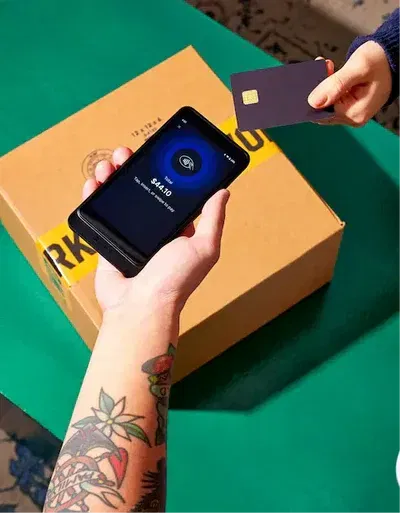Top 10 Project Work Designs to Elevate Your Workflow
Introduction: Why Project Work Designs Matter More Than Ever
Let me ask you something. Have you ever tried to build something—anything—without a blueprint? It’s chaotic, confusing, and usually ends in a mess. Whether you’re a student, a freelancer, a team leader, or a creative professional, having clear and purposeful project work designs can mean the difference between success and scrambling.
In this article, we’ll break down what makes a solid design for project work, why it matters, how to structure it, and even how to present it in a way that wows clients, classmates, or stakeholders. If you’re ready to turn your scattered ideas into a streamlined masterpiece, you’re in the right place.
| Category | Key Element | Details / Best Practices | Recommended Tools / Examples |
|---|---|---|---|
| Definition | What is a Project Work Design? | A structured visual or written plan that outlines a project’s flow, resources, and outcomes. | Flowcharts, slides, diagrams, blueprints |
| Primary Purpose | Why It Matters | Provides clarity, prevents miscommunication, aligns all team members or stakeholders. | Visual mapping and workflow charts |
| Common Formats | Based on Project Type | Wireframes, storyboards, schematics, timelines, presentation decks. | Figma, Canva, Lucidchart, AutoCAD |
| Core Components | Elements of Great Designs | Objectives, timeline, roles, deliverables, tools, communication method. | Clear labeling, visual hierarchy, readable fonts |
| Project Types | Industry Use Cases | Academic, web design, engineering, business planning, marketing. | Slides, prototypes, dashboards, research outlines |
| Solo vs. Team Use | Design Considerations | Solo: linear, simplified. Team: layered, collaborative, role-based. | Notion, Trello (team); Google Docs (solo) |
| Creation Process | Steps to Build a Design | Discovery → Sketch → Tool selection → Layered building → Feedback → Finalize | Pen & paper, Canva, Figma, Miro |
| Presentation Tips | Making Designs Understandable | Start with a story, use visuals, emphasize milestones, allow Q&A. | PowerPoint, Google Slides |
| Common Mistakes | What to Avoid | Overdesign, unclear flow, missing deadlines, ambiguous roles, ignoring feedback. | Fix with checklists and external review |
| Optimization | Visual & Functional Enhancements | Use color codes, whitespace, icons, and readable fonts. | Adobe XD, Notion templates |
| Feedback Loop | Why It’s Crucial | Early testing catches issues and improves clarity. | Shared workspaces (Google Drive, Notion comments) |
| Best Tools | Based on Function | Visual: Figma, Canva. Technical: AutoCAD. Collaborative: Trello, Notion. | See tool comparison table in article |
| Design for Presentation | Final Output Readiness | Organized layout, consistent branding, audience-specific messaging. | Use thumbnails, timelines, headers |
| Target Audience | Who Benefits | Students, designers, marketers, developers, business leaders. | Custom layouts based on niche |
| CTA Reminder | What to Do Next | Start designing your next project visually before writing. Share, test, and improve. | Invite feedback and peer review |
What Are Project Work Designs?
At its core, a project work design is your plan. It’s how you structure your objectives, workflows, deliverables, resources, and outcomes visually or descriptively before jumping into execution.
Depending on the industry or purpose, project designs can include:
- Wireframes or prototypes for websites
- Blueprints for construction
- Flowcharts for business workflows
- Presentation slides for academic or pitch projects
- Storyboards for creative work
But no matter the medium, a great design for project work does two things well:
- Communicates the vision clearly
- Keeps the execution process aligned with goals
Types of Project Work Designs by Purpose
Different projects demand different design formats. Here’s a table to help visualize some common types:
| Project Type | Typical Design Format | Tools Commonly Used |
|---|---|---|
| Website/App Development | Wireframes, Prototypes | Figma, Adobe XD, Sketch |
| Business Proposals | Flowcharts, Gantt Charts | Canva, Lucidchart, Microsoft Project |
| Academic Projects | Research Outlines, Slides, Visual Aids | PowerPoint, Google Slides, Canva |
| Engineering Projects | CAD Blueprints, Schematics | AutoCAD, SolidWorks |
| Marketing Campaigns | Campaign Maps, Editorial Calendars | Trello, Notion, Miro |
Insert Image Here: Infographic showing various formats of project work designs based on goal.
Key Elements of Effective Project Work Designs
If your design for project doesn’t include the following, it’s time to go back to the drawing board:
- Clear Objectives: What’s the end goal?
- Timeline: Milestones and deadlines.
- Roles & Responsibilities: Who’s doing what?
- Resources Needed: Tools, materials, budget, people.
- Deliverables: What should be produced, submitted, or shown?
- Communication Plan: How will team members or reviewers stay updated?
Pro Tip: Use visual hierarchy and color to separate sections clearly. Good project work designs are not just functional—they’re pleasant to engage with.
How to Create a Project Work Design from Scratch
Let’s walk through the process:
- Start with Discovery
- Define your goal, scope, and constraints.
- Interview stakeholders or team members.
- Sketch It Rough
- On paper or digitally, create a rough flow of what needs to happen.
- Don’t worry about visuals yet—just logic and order.
- Choose the Right Tool
- Pick a platform that suits your industry and project scale.
- (e.g., Canva for academic, Figma for digital UX, Notion for team collaboration)
- Build in Layers
- Start with an outline.
- Add visuals, icons, or UI elements.
- Layer on color codes, labels, or tags.
- Test and Get Feedback
- Show your design to 1-2 people.
- Ask: Is it clear? Intuitive? Visually organized?
- Refine and Finalize
- Polish fonts, align spacing, and ensure it’s presentation-ready.
Designing Project Work for Teams vs. Individuals
The approach can differ significantly:
| Factor | Team-Based Projects | Individual Projects |
|---|---|---|
| Communication | Needs embedded updates and status indicators | Personal task-tracking is sufficient |
| Design Complexity | Often more layered and interactive | Simpler and more linear |
| Tools Preferred | Notion, Trello, Asana | Google Docs, Slides, OneNote |
| Presentation Style | Collaborative formats like shared dashboards | Solo decks or portfolios |
Whether solo or group-based, the best project work designs eliminate confusion and reduce guesswork.
Common Mistakes to Avoid in Project Design
Mistakes can derail even the most brilliant ideas. Look out for these:
- Overcomplication: Too much info overwhelms the viewer.
- Lack of visual balance: Everything feels cramped or too spaced out.
- Missing timelines: People need deadlines to prioritize.
- Ambiguous roles: Don’t make people guess their tasks.
- Ignoring feedback: Designs should evolve with input.
Quick Fix Checklist:
- Is the flow logical?
- Can someone new understand the design?
- Does it use readable fonts and clear headings?
- Are sections properly labeled?
Best Tools for Project Work Designs
Here are our top picks by category:
| Purpose | Recommended Tool | Why It Works |
|---|---|---|
| Visual Prototyping | Figma | Great for UI/UX and easy sharing |
| Charting & Diagrams | Lucidchart | Intuitive for flowcharts and diagrams |
| Academic/Slides | Canva | Pre-built templates, drag-and-drop simplicity |
| Team Project Dashboards | Notion, Trello | Integrates notes, tasks, timelines, and visuals |
| Engineering/Architecture | AutoCAD, SketchUp | Industry-standard for technical drawings |
Insert Table Here: Feature comparison of top 5 tools by pricing, features, and usability.
How to Present Your Project Work Designs Effectively
You’ve got the design, now make sure people get it:
- Start with a short story: Why this project? What problem does it solve?
- Highlight milestones visually: Use icons, timelines, or checkmarks.
- Use engaging titles: Grab attention, avoid dry terms like “Part A.”
- Practice your delivery: Be clear, brief, and interactive.
- Leave time for Q&A: Encourage dialogue and suggestions.
Insert Image Here: Sample presentation layout (thumbnail grid + timeline).
Top 15 Frequently Asked Questions About Project Work Designs
1. What is a project work design and why is it important?
A project work design is a structured blueprint that outlines how a project will be developed, managed, and executed from start to finish. It includes essential elements like objectives, timelines, resources, deliverables, and communication methods.
The reason this is so important is that it removes ambiguity. Whether you’re managing a solo academic task or leading a multi-person product launch, a detailed design for project ensures that everyone knows their role and goals. It prevents scope creep, boosts productivity, and improves collaboration.
2. How does a project work design differ from a project plan?
While the two terms are often used interchangeably, a project work design typically refers to the structural and visual representation of a project—such as flowcharts, diagrams, or wireframes—whereas a project plan focuses more on task lists and timelines.
In essence, your design for project offers a high-level view of how everything connects and functions, making it easier to align goals and streamline communication.
3. Who should create a project work design?
Anyone initiating or managing a project should create a project work design. This includes:
-
Students preparing academic presentations or research
-
Engineers planning construction or mechanical layouts
-
Designers mapping website or app features
-
Business professionals building strategic proposals
-
Marketing teams planning a campaign roadmap
The earlier you invest in a solid design for project, the more organized and efficient your execution will be.
4. What are the essential components of a project work design?
A complete project work design should include:
-
Objectives – What are you trying to achieve?
-
Scope – What’s included or excluded?
-
Resources – Tools, people, budget, materials
-
Milestones – Key stages and deadlines
-
Roles & Responsibilities – Who is doing what?
-
Deliverables – Final output(s)
-
Communication Strategy – How you’ll update stakeholders
When you focus on these areas, your design for project provides a clear roadmap that is both actionable and easy to follow.
5. What tools can I use to create effective project work designs?
There are several powerful tools you can use depending on the complexity of your project:
| Purpose | Best Tools |
|---|---|
| Visual Layout | Canva, Adobe XD, Figma |
| Team Collaboration | Trello, Notion, Asana |
| Engineering Design | AutoCAD, SketchUp, SolidWorks |
| Presentation/Academic | Google Slides, PowerPoint |
| Diagrams & Flows | Lucidchart, Miro, Draw.io |
These tools allow you to turn even the most complex design for project into an intuitive, user-friendly format.
6. How do I make sure my project work design is easy to understand?
Clarity is king. Here are several ways to ensure your project work design is easily understood:
-
Use consistent labeling for sections
-
Break content into digestible chunks
-
Incorporate color coding and icons for quick scanning
-
Avoid clutter by embracing white space
-
Provide a legend or key if using complex diagrams
The best designs for projects communicate clearly at a glance without needing long explanations.
7. Should a project work design include visual elements?
Absolutely. Visuals are not just for decoration—they enhance comprehension. By including charts, flow diagrams, timelines, or mockups, your project work design becomes more interactive and accessible.
Especially for collaborative environments, visuals speed up understanding, reduce questions, and streamline onboarding of new team members.
8. How can I use a design for project presentations?
Your design for project can form the backbone of a compelling presentation. Whether you’re pitching to clients, presenting to classmates, or updating your team, your design can:
-
Serve as your slide sequence
-
Provide talking points for each project phase
-
Allow for interactive walkthroughs
-
Visually show progress or task ownership
Include call-outs, zoom-ins, or annotations during the presentation for enhanced engagement.
9. What’s the best way to organize information in a project work design?
Structure is everything. Follow this sequence for organizing information in your project work design:
-
Title/Overview – Project name, context, quick summary
-
Objectives – What you aim to accomplish
-
Design Layout – Flowchart or diagram
-
Milestones & Timeline – Key dates
-
Resources – Tools, platforms, budgets
-
Tasks & Owners – Assignments per person/team
-
Final Deliverables – What success looks like
Using headers, bullet points, and sections will make your design for project easy to digest.
10. What are common mistakes people make in project work designs?
Here are frequent errors to avoid:
-
Too much information in one section
-
Unclear goals or lack of direction
-
Missing deadlines or dates
-
No designated responsibilities
-
Neglecting the audience when choosing design format
-
Poor formatting that makes the design hard to follow
Your project work design should be a bridge—not a barrier—to understanding your project.
11. How detailed should a project work design be?
Detail depends on complexity. For small academic or solo projects, a simple outline may suffice. But for corporate or engineering projects, a comprehensive design for project with detailed timelines, dependencies, and visual elements is crucial.
Rule of thumb: Include enough detail that someone unfamiliar with the project could understand the plan.
12. Can I use templates for project work designs?
Yes, and they’re highly recommended—especially if you’re new to structuring designs for projects. Templates provide consistency and save time.
Popular platforms like Canva, Notion, or Microsoft Word offer free and premium templates suited for:
-
Project timelines
-
Gantt charts
-
Flow diagrams
-
Storyboards
-
Slide decks
Customize them based on your needs, but don’t hesitate to start with a solid foundation.
13. How can I align a project work design with business goals?
Your project work design should reflect and support larger business objectives. Here’s how:
-
Tie your goals to KPIs or business outcomes (e.g., revenue, engagement, retention)
-
Align team roles with department goals
-
Highlight how each deliverable supports the company’s mission
-
Include risk assessments or contingency plans
This makes your design for project more than a workflow—it becomes a strategic asset.
14. What’s the role of feedback in refining project work designs?
Feedback is essential for clarity and improvement. Even the best project work designs benefit from an extra set of eyes.
-
Ask for feedback from colleagues, mentors, or stakeholders
-
Focus on functionality (Does the flow make sense?)
-
Test for usability (Can someone follow it without explanation?)
-
Iterate based on constructive input
Incorporating feedback helps your design for project become more refined, inclusive, and error-free.
15. How often should I update a project work design?
A project work design is a living document. It should be updated:
-
When scope changes occur
-
As new stakeholders join the project
-
After milestone completions
-
When feedback leads to design tweaks
-
Before key presentations or check-ins
Failing to keep your design current can lead to confusion and inefficiency. Use tools like Trello or Notion to automate some of these updates and keep everything synchronized.
Conclusion: Design Smarter, Work Better
Project work designs are more than fancy visuals—they’re your roadmap to success. They provide clarity, direction, and structure whether you’re working solo or with a team. They help turn a vague idea into a concrete plan, and ultimately, a successful outcome.
If you’re serious about elevating your next project, start with the design. Trust me—it’s the fastest way to go from chaos to clarity.
Have a project coming up? Try drafting your design first using one of the tools above. Want feedback or examples? Drop a comment below or shoot me a message. Let’s design smarter, together.
Relevant Backlinks – How to Get High-Quality Links for Better SEO




